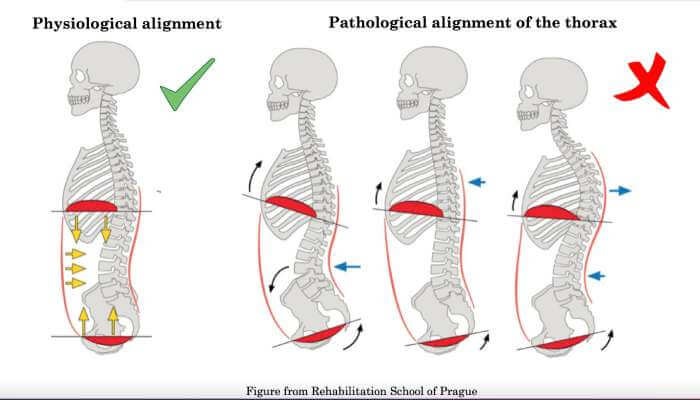Posture & Your Pelvic Floor
By Jeanette Brown
Core/Pelvic Floor Specialist
When dealing with pelvic floor issues, we only focus on the area where we’re feeling the discomfort.
Did you know how you stand, move and sit has a huge impact on your pelvic floor and its ability to function properly?
Poor posture leads to lower back pain, weakness in the core, and stress incontinence; this means leaking a few drops when you laugh, cough or sneeze. It also leads to constipation.
Sitting for extended periods of time and not taking breaks increases slouching, rounded shoulders, forward head, neck pain and dull aches in the lower back. These issues all contribute to pelvic floor dysfunction.
Poor posture, or misalignment, as it’s sometimes called, contributes to extra downward pressure on the pelvic floor organs and decreases the ability of the pelvic floor muscles to hold up against that pressure.
The same rules apply in standing.
If you stand with your pelvis in a forward or back tilt (this either increases or decreases the natural curve in your lower back), you also decrease the ability of the pelvic floor by putting more pressure on the pelvic floor organs.

Constipation
Constipation is defined as having fewer than three bowel movements per week; hard, dry stools; straining to move the bowels; and a sense of incomplete evacuation.
Poor posture on a toilet may also lead to constipation— hunching over with your knees lower than your hips — can promote constipation. That position makes it harder for the abdominal muscles and rectum to help move faeces through the anus.
Misalignment
To simplify this explanation, we’ll compare your body alignment to the wheel alignment of your car.
Let’s say the front driver’s side wheel is out of alignment; over time, you put extra wear and tear on the other three wheels and suspension components.
Now think of your pelvis as the car, and the suspension component is your pelvic floor. If your pelvis is misaligned, it will affect the support of your pelvic floor!
Maintaining good posture, starting with your pelvis, has a huge impact on your pelvic floor, as well as minimizing lower back pain, SI (sacroiliac joint) dysfunction and weakness and bulging in the core muscles.
When the pelvis is tipped in a different direction, it can result in major problems for your pelvic floor, especially if your faulty habits have been consistent for decades.

Your pelvic floor is designed to function regardless of what physical activity you are doing.
However, with years of misalignment, it’s understandable why we may start to leak during exertion, whether it’s laughing, jumping, picking up a heavy bag or running after the tail lights of the bus.
It’s not your fault; nobody told you.
Good News!
Wherever you are in your pelvic health journey, there are simple exercises you can practice to improve posture and pelvic floor health.
Easy measures, such as being aware of standing with equally distributed weight in both feet, relaxed shoulders and standing tall.
Always keep in mind that awareness of your posture and its effects on your pelvic floor is essential for maintaining good pelvic health.
Not sure where to start? Click here for your free resource on time-saving tips for your posture and pelvic floor.
Core Restore by Jeanette is the go-to destination for those suffering from bladder leaks, urgency, prolapse and a weak core. With her specialized expertise and compassionate care, Jeanette is dedicated to helping women feel confident again.

